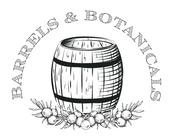Scotch whisky is a distilled alcoholic beverage made at distilleries exclusively in Scotland. The earliest record of whisky making is at Lindores Abbey in the Kingdom of Fife in 1494. Today, there are over 100 distilleries operating in Scotland and this number continues to grow as new scotch whisky distilleries are being built.
Water, grain and yeast are mixed to form a weak beer which is then distilled in copper stills. The resulting clear spirit is then filled into oak casks where the spirit matures into whisky. It is this interaction between spirit and oak over many years that gives Scotch it's unique colour and flavour.

STAGE #1 MALTING
The malting process begins by soaking dry grains in cold water in order to revive them; this is traditionally carried out in a big water tank or steep located at the end of the barley loft.
The moist grains are then encouraged to germinate. They are spread across a floor and turned regularly until the roots and shoots appear. The enzymes released within each grain during germination assist with the breakdown of cell walls and modification of stored starches to form soluble sugars.
Malted grains are transferred to a heating device to terminate germination. Traditionally the malt was transferred to the malt kiln where it was spread across a perforated floor and germination ended by hot air rising from the kiln’s furnace beneath.
The heating device is fuelled with smokeless fuel. However, if peated malt is required peat will also be burned. Traditionally the waste heat and smoke were extracted through a chimney called a Pagoda roof.
Balvenie, Bowmore, Highland Park, Kilchoman, Laphroaig and Springbank produce a proportion of their malt using the traditional methods.

STAGE #2 MASHING
Malted barley is ground in a mill into a coarse flour called grist. Grist is mixed with hot water in a large vessel called a mash tun. The porridge like mixture is stirred to encourage the soluble sugars to dissolve out of the grist and into the hot water. The process is repeated a couple of times, each time with hotter water. This ensures maximum extraction of sugars and destruction of enzymes and any other undesirables.

STAGE #3 FERMENTATION
The hot sweet liquid is called Wort and is drained off, cooled and stored. Wort often tastes sweet like a green tea. The waste solid or Draf may be converted to a feed for livestock - even shipped to farmers in Japan.
The traditional cast iron mash tuns, complete with their internal cogged raking system, in Bruichladdich, Edradour and Springbank are all over one hundred years old.
The number of washbacks varies between Scottish distilleries, from two at Abhainn Dearg in the Isle of Lewis, six at Bowmore and two dozen at Glenfiddich.

STAGE #4 DISTILLATION
Distillation of the Worts enables concentration of ethanol. Wort is heated in a wash still and when hot enough the alcohols evaporate up the lyne arm and condense in a condenser, traditionally a worm tub. As the vapours cool they liquidise; this liquid has an alcohol content of around 20% by volume and is called Low Wines. Traditional worm tubs are still in use at a few distilleries including Dalwhinnie and Pulteney.
Low Wines pass into the spirit still and are distilled a second time. The first liquid produced or first cut of this second distillation process is called foreshots and is collected and set aside, the middle cut is the liquid with a high ethanol content which will be converted into whisky, whilst the third cut is the feints and is also set aside. The first and third cut are used in the next run in the wash still. The middle cut is the new make spirit generally with an alcohol content of 60% to 75% by volume.
Second and subsequent distillations enable concentration of ethanol and removal of undesirable alcohols such as methanol. Most Scottish distilleries practice double distillation although a few including Auchentoshan and Springbank practice triple distillation.

STAGE #5 MATURATION
The new make spirit may be diluted slightly with water prior to filling into oak casks which are then rolled into warehouses in Scotland and left to mature in peace and quiet for a minimum of three years. For security reasons, for example risks of fire and flooding, casks may be stored at the distillery and in warehouses across Scotland.
Casks of varying shapes and sizes are used, most commonly sherry butts, port pipes, bourbon barrels and wine casks. These may be stored in traditional dunnage warehouses with dirt floors, stone walls and slate roofs or on racks or palates up to a dozen high in modern steel warehouses.
Many distilleries continue to use dunnage warehouses, for example Bowmore, Port Ellen and Highland Park.

STAGE #6 BOTTLING
The bung is removed, the cask rolled on its side and the whisky allowed to disgorge into a tank. The alcohol content may be reduced by the addition of water and 70cl is filled by hand or automated equipment into the bottle.
Unlike wine, no further maturation occurs in the bottle. The contents are normally retained by a cork stopper or screw cap.



